One of the most frequently misunderstood garments in a kimono wardrobe is the nagajuban (長襦袢, long juban, also referred to as nagajyuban, or sometimes simply juban). They are often so lovely and well-decorated that people might mistake them for proper kimono, which can be embarrassing and incorrect. It’s not uncommon to see attendees at anime conventions flaunting their “amazing kawaii new kimono” actually running around in these in-between garments. I have seen them worn as over-jackets (Angel Adoree does this quite often), and with proper styling choices this can be a fun look, but if you’re aiming for accuracy it’s quite awkward to be caught out and about in one with nothing over it.
They’re not quite “underwear” as we’d think of them in Western terms. When wearing a kimono, you typically start with either a kimono bra (that helps to flatten and smooth the bust line) and comfortable panties or a traditional wrapping cloth known as sarashi. On top of that layer, there is another fairly plain layer known as hadajuban (肌襦袢), though I admit – in very hot or muggy weather I often forgo the hadajuban and just wear my nagajuban over my bra and shorts. The nagajuban goes over these layers, but they are not proper outer garments either. They’re meant to be seen in very minute amounts – at the collar, at the sleeve edges, and occasionally at the hem while walking. Anything more would be kind of indecent. They also add shape and structure to the kimono, to help achieve that ideal columnar figure. Between these layers, there are often towels or small pads used to help smooth out the body line. It always gives me a good chuckle when people imagine a woman undressing and simply slipping the kimono off her shoulders and being essentially naked underneath. The reality is far less sexy, and is illustrated spectacularly in this comic by @nyorozo on Twitter. Fantasy on the left, reality on the right!
There are a few giveaways that can help you differentiate between a kimono and a juban. Kimono for women are meant to be worn with an ohashori (fold at the waist) and so are typically quite long. Nagajuban are typically much shorter, since they’re not meant to be folded. They also often have a white or contrasting collar over which a decorative haneri can be attached. Lastly, they also tend to be more narrow, without the diagonal okumi panel attached between the front and collar pieces.
There is also a variant called hanjuban (半襦袢, half juban) that is much shorter, and typically paired with a wrap-style skirt know as susoyoke (裾除け). These are easier to adjust to your height, tend to be much more convenient to wear. Many modern ones are available in a combination of breathable cotton and washable polyester. Together, they are sometimes referred to as nibushiki (separated) nagajuban.
Vintage undergarments were often red or other vivid colours, back when kimono in general were much bolder and more vibrant, and people wore them more often and could justify getting ones that coordinated with specific kimono. Naomi no Kimono Asobi has a lot of very amazing examples of brightly-coloured vintage undergarments. These bold patterns an vivid reds are also a throwback to the sumptuary laws of the Tokugawa shogunate, which prevented the merchant class from wearing fabrics that were showier than the samurai and aristocrats. To get around this, they would often hide flashy designs and bright colours on their undergarments, a trend which continued on even long after the sumptuary laws were rendered defunct.
Nowadays, nagajuban tend to be white or pale pastels, since those are much more neutral and versatile. When you don’t wear kimono every day it’s not really worthwhile to invest in a large collection of undergarments; it makes much more sense to buy one or two that you can wear with everything.
That being said, my collection is a combination of versatile modern pieces, vibrant vintage nagajuban, and a few home-made or modified items. Because I’m so tall, I often have to rely on the two-piece variants and even then sometimes have to lengthen the skirt portion. If it’s cool enough, I might also wear a full juban with susuyoke, but that can begin to get quite thick around my already not-insubstantial waistline. Another handy aspect of a two-piece is that if you’ve got broader hips and the front hem of your kimono flaps open sometimes, you can tie the susuyoke so the split is in the back. This way if your kimono hem spreads too wide, you’re assured of the under-skirt keeping you decent.
- Vintage Vermillion
- Vintage with Pastel
- Faux-Shibori
- Handmade Furisode Two-Piece
- Modern Yellow Two-Piece
- Muslin with Shrimp
- Modern Furisode
- Sweet Floral
- Pastel Bokashi
Hopefully this will help alleviate some of the confusion about what these garments are and how they’re traditionally worn!


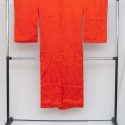
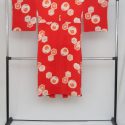

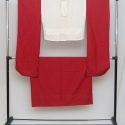
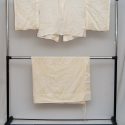
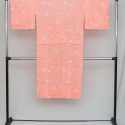

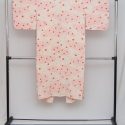
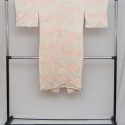
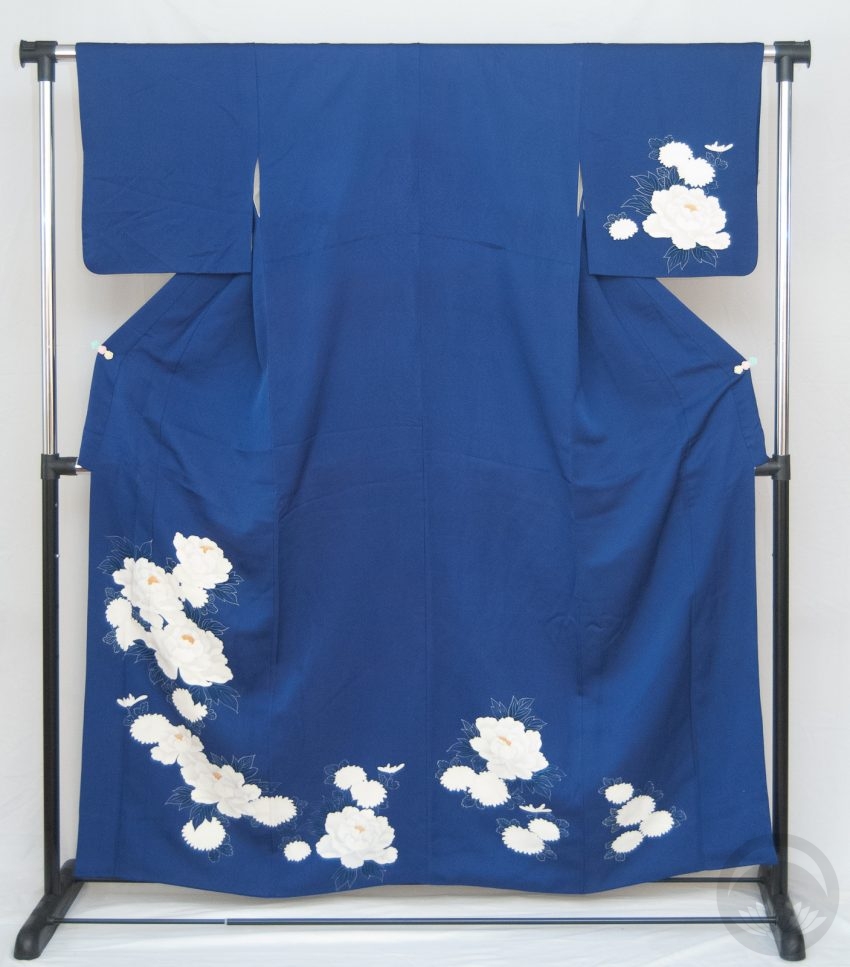
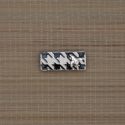
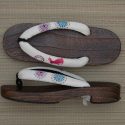











 Bebe Taian
Bebe Taian CHOKO Blog
CHOKO Blog Gion Kobu
Gion Kobu
Hello,
This was a really helpful comparison. I am new to wearing kimono, but I love the culture around it.
I’ve found a really nice pink modern yukata that is machine washable. I was thinking of turning that into a nagajuban. Should I decompose and alter the yukata or is it okay to only adjust the length?
Thank you for your help.
I’ve actually worn yukata as-is for juban. I don’t even shorten them, I just end up using the extra fabric a padding around the waist. That way it’s still wearable as a yukata later. 🙂
Hi there!
Kind of an odd question for you. I’m a seamstress/costume maker, completely self taught. I started researching kimono traditions and etiquette a few years back in order to make a Wa Lolita outfit for our local Obon Festival. It turned out pretty great and has gotten lots of complements every time I’ve worn it, but I’d very much like to update it this year as I’m also making a yukata for my husband. (I’m modifying his fabric slightly since it’s indigo-on-white and not meant for festival/public wear, just going to dye it a bit darker.)
I found some great vintage kimono bolts for both of us that I’m going to restore to use, but I’m concerned because the one I’d like for myself is technically muslin wool for nagajuban. It’s a beautiful pastel pink printed with blue and lilac sensu and ume. Since I’m sewing it myself and it will be modernized rather then purely traditional, would it still be very obviously wrong/inappropriate or do you think it would be alright?
Sorry I know that was long and random but I’m desperate for input. Thanks for your time!
Hello! While I can’t say for certain one way or another without seeing the fabric, I think it would be fine honestly. The most obvious things that flag a garment as a juban and not a hitoe kimono or yukata are the contrasting, half-width collar and the length. If you’re making something from scratch, it won’t have those construction hallmarks.
Also, reusing juban fabric for other items isn’t unheard of traditionally either. I have a nagoya obi that I’m nearly 100% positive was a men’s juban at some point in its life cycle!
Hi! Thanks for your informative post! I’m planning to wear a furisode for my graduation that I bought online, and I am looking to buy a nagajuban to underneath it. What should be the measurements of the nagajuban compared to the furisode? My furisode sleeves are quite short (袖丈98cm), and I was wondering if it was okay to wear a nagajuban with longer sleeves (袖丈約108cm)?
The length of the nagajuban body should definitely be shorter than the kimono, since they’re not worn with ohashori. So you’d want it to be roughly the same length as your shoulder-to-ankle measurement. The sleeve length is less of an issue. For a difference of 10cm you would totally be able to pin or sew the sleeves up a bit to fit nicely. Basically, you’d do the same to your juban as they do to maiko kimono sleeves, like this: https://i.pinimg.com/736x/63/a4/10/63a410bb0c196eb956b1e714139a944f–japanese-geisha-japanese-style.jpg That pleat is folded and sewn into place to alter the length. Hope that helps! 🙂 I’d love to see photos of your outfit when it’s all put together.
Hi, I’ve been collecting the pieces together to go with a very beautiful vintage (more formal) kimono I purchased from a local vendor here in Seattle. I’m attempting to understand (and be respectful) of how to wear. I acquired a bright red nagajuban, quite lovely with a faint embossed crane design on it. I just want to make sure that there’s no negative connotation, or if I’m saying something I don’t mean to, by showing red at the collar or sleeves. I appreciate any advice you can give!
That sounds lovely! Bright red undergarments were common until the end of the Taisho era and still existed with some regularity right up until WWII. There’s no negative or significant connotation to them, and are perfectly suited to almost any vintage kimono. Personally, I think it’s quite chic to see a little flash of red at the sleeve or hem 🙂
Awesome! I have pretty much everything except some geta, tabi and the little extra pieces. I went digging through your glossary last night to find the word I was looking for because everyone I asked kept saying it was a Furisode but I was sure the sleeves weren’t that long! It’s more like a Houmongi if I understand right. Thanks so much for replying! Your glossary was so much more helpful!
I’d love to see photos when you get your whole item assembled! As for the furisode/houmongi confusion – vintage pieces tended to have longer sleeves, and that can kind of blur the lines for some folks. Modern furisode have sleeve length around 40″, and most other modern kimono have about 20″ length. Vintage kimono tended towards the 30″ or so, which can throw people off since it falls right in the middle.
It’s unfortunate, my phone doesn’t really capture it very well. I tried zooming in on the first picture and almost cried at how degraded it was (and here I thought my camera had upgraded! Something about nice fabric, cameras don’t like I think!)
How I store it on my wall (not much storage, and I really wanted to display it):
https://s20.postimg.org/nyofbojgt/20180103_143444.jpg
Opened up, I store each layer inside the next so it lays flat, floor/wall space is unfortunately a premium in my house, or else I would have bought an actual stand:
https://s20.postimg.org/f3nl162e5/20180103_143657.jpg
For once though, my camera did get the obi beautifully I think. The obi was I think half the price of the kimono, which was saying a lot. Of course I picked out the most elaborate one he had.
https://s20.postimg.org/mjmumyxt9/20180103_143835.jpg
Ohhh, how lovely!